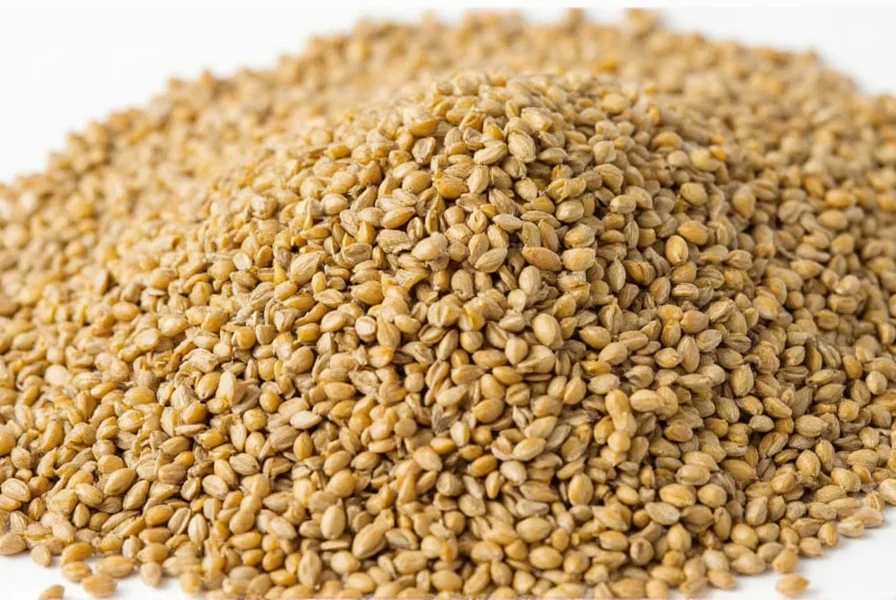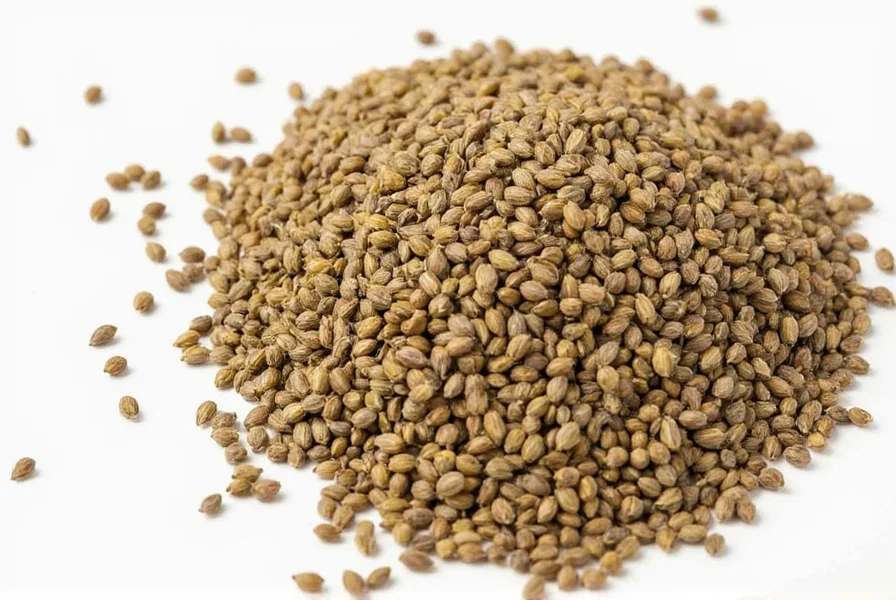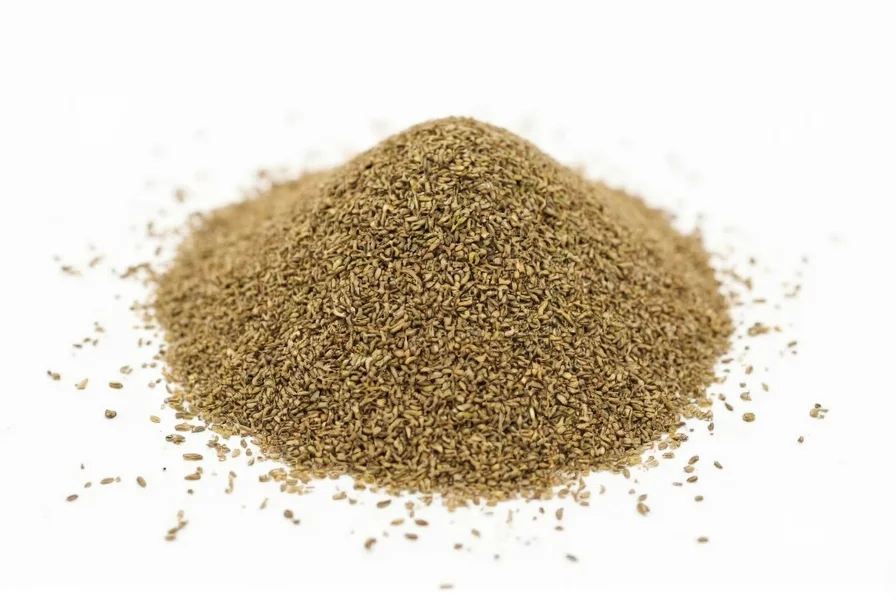Understanding what coriander seeds are begins with recognizing their botanical origin. These tan-to-brown spherical seeds measure approximately 3-5mm in diameter and contain essential oils that deliver their characteristic aroma. When crushed or toasted, they release complex flavor compounds that enhance both savory and sweet dishes across culinary traditions worldwide.
Botanical Identity and Global Terminology
Coriander seeds come from the same plant that produces cilantro leaves, creating frequent confusion in terminology. In North America, "cilantro" refers to the fresh leaves while "coriander" denotes the seeds. Internationally, particularly in the UK and Commonwealth countries, "coriander" describes both the plant and its seeds. This linguistic distinction is crucial when following global recipes or researching coriander seeds vs cilantro differences.

Nutritional Composition and Health Considerations
Per 100g serving, coriander seeds contain significant amounts of dietary fiber (51.4g), protein (12.3g), and essential minerals including iron (17.4mg), magnesium (339mg), and calcium (709mg). They also provide vitamins A, C, and K. Research suggests potential health benefits of coriander seeds including antioxidant properties and digestive support, though scientific evidence remains preliminary for many claimed therapeutic effects.
| Nutrient | Per 1 Tbsp (6.8g) | Per 100g |
|---|---|---|
| Calories | 23 | 338 |
| Dietary Fiber | 3.5g | 51.4g |
| Iron | 1.2mg (7% DV) | 17.4mg (97% DV) |
| Calcium | 48mg (4% DV) | 709mg (55% DV) |
| Magnesium | 23mg (5% DV) | 339mg (81% DV) |
Culinary Applications and Flavor Development
Professional chefs emphasize proper handling techniques when working with how to use coriander seeds in cooking. Whole seeds maintain flavor integrity for up to six months when stored properly, while ground coriander loses potency within weeks. Toasting seeds in a dry skillet for 1-2 minutes before grinding unlocks their full aromatic potential, transforming their flavor profile from earthy to complexly citrusy with warm undertones.
These seeds form foundational elements in spice blends worldwide:
- Indian cuisine: Essential in garam masala and curry powders
- Middle Eastern cooking: Key component in za'atar and baharat
- Mexican dishes: Complement cumin in adobo seasonings
- European baking: Featured in rye breads and pickling spice mixes
Storage Best Practices for Maximum Freshness
To preserve the delicate volatile oils responsible for coriander seed nutritional value, store whole seeds in airtight containers away from light and heat. Glass jars in a cool, dark pantry maintain optimal freshness for 6-12 months. Refrigeration extends shelf life to 1-2 years but requires careful moisture control. Never store near heat sources like stoves or ovens, as temperature fluctuations accelerate flavor degradation.

Evidence-Based Health Perspectives
Current research indicates potential digestive benefits from coriander seeds for digestion, with studies showing possible carminative effects that may reduce bloating and gas. Laboratory research suggests antioxidant compounds in coriander seeds might support metabolic health, though human clinical trials remain limited. Always consult healthcare providers before using coriander seeds for therapeutic purposes, especially if managing chronic conditions or taking medications.
Common Substitutions and Culinary Equivalents
When unavailable, several alternatives approximate coriander seed flavor:
- Cumin (use 50% less quantity due to stronger flavor)
- Fennel seeds (for similar citrus notes in baking)
- Caraway seeds (in rye bread applications)
- Coriander powder (use 1:1 ratio but expect less complex flavor)
Understanding these substitutions proves valuable for cooks exploring how to substitute coriander seeds in international recipes while maintaining authentic flavor profiles.
Traditional Preparation Methods
Culinary traditions worldwide employ specific techniques for how to toast coriander seeds properly. Dry roasting in a cast-iron skillet over medium heat for 60-90 seconds until fragrant releases essential oils without burning. Immediately transferring to a cool surface stops residual heat from over-toasting. For optimal flavor extraction in liquid-based dishes, lightly crushing seeds before adding to soups or stews provides better infusion than using whole seeds.
Frequently Asked Questions
Are coriander seeds and cilantro the same plant?
Yes, coriander seeds and cilantro come from the same plant (Coriandrum sativum). The fresh leaves are called cilantro in North America, while the dried seeds are known as coriander seeds. Internationally, "coriander" often refers to both parts of the plant.
Can I substitute ground coriander for whole seeds?
Yes, but with flavor considerations. Use a 1:1 ratio when substituting ground coriander for whole seeds, though the ground version provides less complex flavor. For best results, toast and grind whole seeds immediately before use rather than relying on pre-ground spice.
Do coriander seeds need refrigeration after opening?
Refrigeration extends shelf life but isn't essential. Store whole coriander seeds in an airtight container in a cool, dark pantry for 6-12 months. For longer storage (1-2 years), refrigerate with silica gel packets to control moisture, but allow seeds to reach room temperature before opening to prevent condensation.
What's the difference between coriander seeds and caraway seeds?
While similar in appearance, coriander seeds have a citrusy, sweet flavor with warm undertones, whereas caraway seeds offer a more pungent, anise-like taste. Coriander seeds are rounder and lighter in color compared to the darker, crescent-shaped caraway seeds. They're not direct substitutes but can work in some baking applications.
Are there any allergy concerns with coriander seeds?
Coriander seed allergies are rare but possible, particularly among individuals with existing spice allergies or sensitivities to related plants in the Apiaceae family (like celery or carrots). Symptoms may include skin irritation, digestive discomfort, or respiratory issues. Those with known spice allergies should consult an allergist before consuming.











 浙公网安备
33010002000092号
浙公网安备
33010002000092号 浙B2-20120091-4
浙B2-20120091-4